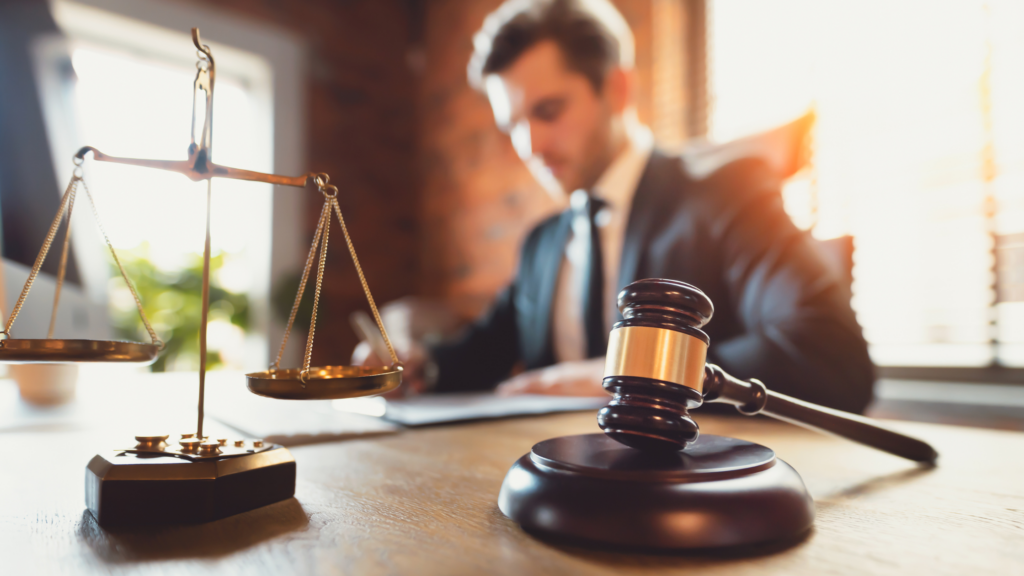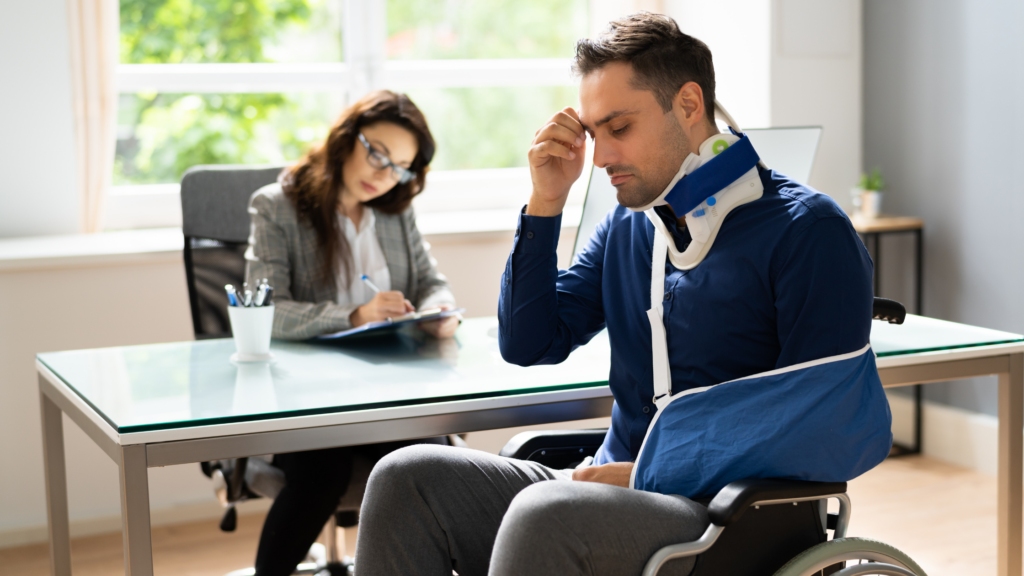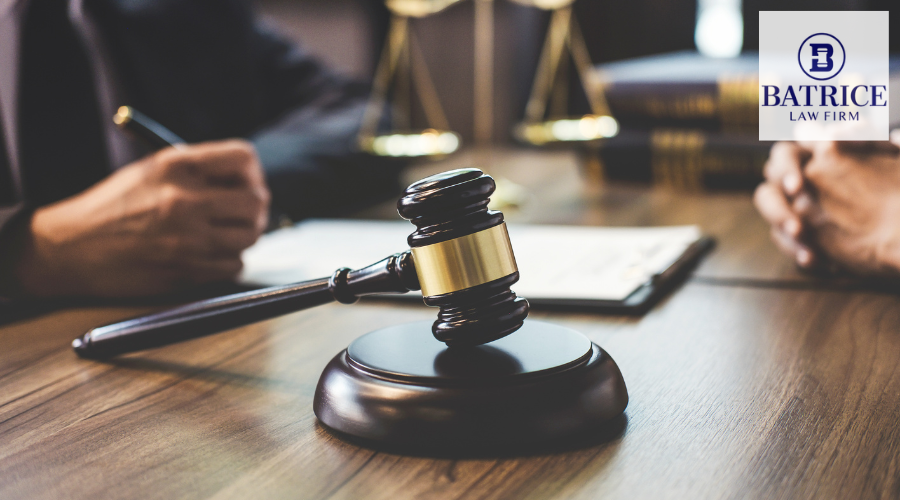Key Insight: When drivers flee accident scenes in Austin, specialized attorneys become essential advocates who navigate the complex intersection of uninsured motorist claims, evidence collection, and insurance negotiations to secure rightful compensation for victims.
Hit-and-run accidents in Austin leave victims injured, without a clear liable party, and facing growing medical bills. These cases demand more than standard legal help—especially when navigating Texas’s uninsured motorist laws and local compensation rules.
An experienced Austin uninsured motorist attorney brings strategic expertise, from preserving evidence and analyzing police reports to negotiating with reluctant insurers. Their deep knowledge of Travis County court procedures strengthens your case, whether through settlement or litigation.
Delaying legal help risks losing key evidence and missing deadlines. Skilled attorneys not only relieve the immediate stress but also build strong claims that address both your current losses and long-term needs.
Key Highlights
- Austin uninsured motorist attorneys help victims pursue compensation when they’ve been injured by hit-and-run drivers or those without insurance.
- They’re experts at navigating the complex legal landscape, collecting vital evidence such as police reports, traffic camera footage, and witness statements.
- These attorneys stand up for victims’ rights, working to ensure they receive fair financial recovery despite the challenges of establishing fault in hit-and-run scenarios.
- They’ll help you understand the fine print in your insurance policy and explore all possible coverage options for hit-and-run claims.
- With skilled negotiation tactics, they’ll counter insurance companies‘ attempts to minimize payouts and work to secure the compensation you deserve.
Understanding Hit-and-Run Accidents in Austin
Quick Take: Austin’s hit-and-run epidemic stems from multiple factors including urban congestion, infrastructure deficiencies, and drivers evading consequences. With pedestrians bearing the brunt of these tragic incidents, addressing both driver accountability and city planning is crucial to reversing the alarming 2024 statistics showing that half of all injury or fatal crashes involve drivers fleeing the scene.
Austin’s growing population has created a perfect storm for hit-and-run incidents, with pedestrian-dense urban areas becoming increasingly hazardous. The combination of inadequate street lighting in high-traffic zones and minimal surveillance coverage creates environments where drivers feel they can escape without identification. As a result, pedestrians—who lack the protective shell of a vehicle—suffer disproportionately severe injuries when struck, including life-altering trauma to the brain, spine, and skeletal system. Understanding the specifics of these cases is crucial for determining legal actions and potential compensation.
The psychological factors compelling drivers to flee accident scenes compound these infrastructure challenges. Many drivers make split-second decisions to leave based on panic, impairment, or fear of legal consequences. Over time, this pattern has created a public safety crisis that demands both enforcement innovation and urban design solutions. That’s why examining both the environmental and human elements is essential to developing effective countermeasures.
Contributing factors to Austin’s hit-and-run crisis include:
- Insufficient pedestrian infrastructure in rapidly developing neighborhoods where foot traffic outpaces safety improvements
- Psychological barriers to accountability, including substance impairment and fear of legal or immigration consequences
- Limited nighttime visibility in pedestrian-heavy entertainment districts and residential intersections
- Gaps in traffic camera coverage creating “consequence-free zones” where drivers believe they won’t be identified
- Inadequate public awareness about the severe legal penalties for leaving accident scenes, which exceed those for many initial infractions
- Delayed emergency response times in certain areas, increasing victim vulnerability and mortality rates
- Legal representation is crucial for victims seeking compensation for damages in hit-and-run incidents.
Reversing this troubling trend requires a multifaceted approach integrating urban planning, enforcement technology, and community education. Enhanced streetscape design with proper lighting, dedicated pedestrian paths, and strategic camera placement can dramatically reduce hit-and-run opportunities. Meanwhile, targeted public awareness campaigns must emphasize both the moral and legal obligations of drivers involved in accidents. The future safety of Austin’s streets depends on creating an environment where fleeing an accident scene becomes both more difficult and culturally unacceptable.
The Impact of Uninsured Drivers on Victims
The growing prevalence of uninsured motorists represents a hidden crisis on Austin’s roadways. Beyond the already troubling rise in hit-and-run incidents, victims struck by uninsured drivers face a particularly bleak recovery journey with limited options for compensation. As a result, the financial burden shifts entirely to innocent parties who followed the rules but must now navigate a complex system that offers little protection.
This financial vulnerability creates a cascade of secondary problems for victims. Over time, many exhaust their savings, damage their credit, or even face bankruptcy while attempting to recover physically from crashes that NHTSA data shows are frequently more severe than average. That’s why understanding the full spectrum of impacts—from immediate medical needs to long-term financial stability—becomes critical for anyone involved in such accidents.
The multifaceted challenges victims face include:
- Recovery complications exacerbated by delayed or incomplete medical treatment when victims cannot afford proper care
- Long-term wage losses averaging 40% more than in accidents with insured drivers
- Property replacement difficulties, with 67% of victims unable to replace vehicles at equivalent value
- Increased insurance premiums for victims who must file uninsured motorist claims
- Psychological trauma requiring therapy that often goes untreated due to cost constraints
- The emotional trauma and financial instability caused by wrongful death can significantly impact the lives of families left behind.
The consequences of uninsured driver accidents extend far beyond the crash scene and initial recovery period. When hospitals absorb billions in uncompensated care costs, these expenses ultimately transfer to all consumers through higher healthcare prices and insurance premiums. Meanwhile, victims face an adversarial legal system where collecting judgments proves nearly impossible against defendants without assets or insurance. This reality underscores why protective measures like legal representation and prompt legal consultation are essential safeguards in today’s driving environment.
How Uninsured Motorist Coverage Works
Quick Take: Uninsured motorist coverage serves as a critical financial shield when you’re hit by a driver without insurance in Texas. While optional, this protection is automatically included unless specifically declined in writing, covering both bodily injuries and property damage up to your policy limits—making it an essential consideration for comprehensive protection on Texas roads.
Navigating an accident with an uninsured driver can leave you facing substantial medical bills and repair costs with no responsible party to pay. Uninsured motorist (UM) coverage bridges this gap by stepping in when the at-fault driver either lacks insurance entirely or flees the scene in a hit-and-run situation. This protection operates as a safety net, ensuring you’re not left bearing the financial burden of someone else’s negligence.
As a result, UM coverage becomes particularly valuable in Texas, where approximately 20% of drivers operate vehicles without legally required insurance. When activated, this coverage can address immediate medical expenses, ongoing treatment costs, lost wages during recovery, and vehicle repairs—essentially providing the compensation you would have received had the at-fault driver maintained proper insurance. That’s why insurance professionals consistently recommend maintaining this coverage, even though state law allows drivers to reject it.
Key elements of uninsured motorist protection in Texas include:
- Coverage extends to passengers in your vehicle, ensuring everyone injured receives protection
- Separate property damage coverage (UMPD) specifically addresses vehicle repairs and related expenses
- Stacking options may be available to increase total coverage if you have multiple vehicles insured
- Subrogation rights allow your insurer to pursue the uninsured driver for reimbursement
- Claims typically require police reports documenting the other driver’s lack of insurance
- Compensation limits mirror your liability coverage structure (e.g., 30/60/25 configuration)
Understanding these coverage details before an accident occurs positions you to respond effectively during the stressful aftermath of a collision. While insurers may thoroughly investigate UM claims to verify circumstances, maintaining proper documentation and promptly reporting incidents strengthens your position. Remember that specific exclusions apply—such as accidents occurring in uninsured vehicles you own or damages exceeding your policy limits—making a thorough review of your policy terms essential for maximizing protection against uninsured drivers on Texas roadways.
Challenges in Proving Fault Without a Driver
Quick Take: Hit-and-run accidents create unique legal challenges when establishing fault without the responsible driver present. Victims must navigate complex evidentiary hurdles, insurance complications, and jurisdiction-specific requirements while relying on circumstantial evidence to build their case. Understanding these obstacles is crucial for developing effective legal strategies.
Proving fault in hit-and-run scenarios requires a methodical approach to evidence collection despite the responsible party’s absence. Victims must quickly secure available physical evidence, witness statements, and surveillance footage before these critical elements disappear or degrade. As a result, the investigation often transforms into a complex puzzle where circumstantial pieces must be assembled to create a compelling narrative of liability.
The evidentiary challenges extend beyond basic fact-finding to meeting specific legal thresholds for negligence claims. Without direct testimony from the fleeing driver, establishing the duty of care, breach, causation, and damages becomes significantly more complicated. That’s why insurance companies frequently contest these claims, requiring victims to present comprehensive evidence packages that overcome the inherent uncertainties in hit-and-run cases.
Critical challenges in hit-and-run fault determination include:
- Forensic evidence limitations when physical traces are minimal or compromised by weather or time
- Conflicting or incomplete witness accounts requiring credibility assessment and corroboration
- Surveillance gaps where camera coverage is inconsistent or footage quality is insufficient
- Technical reconstruction difficulties when vehicle positions and movements must be established retroactively
- Insurance policy exclusions and special provisions that may complicate coverage in absence of the at-fault party
Successful resolution of hit-and-run liability cases typically requires legal expertise specializing in circumstantial evidence presentation. Attorneys with experience in these complex scenarios can identify alternative evidence sources, employ accident reconstruction specialists, and navigate the specific procedural requirements across different jurisdictions. The path to compensation may be challenging, but with proper documentation, expert testimony, and persistent advocacy, victims can overcome the evidentiary hurdles created when drivers flee the scene of accidents.
Gathering Evidence for a Strong Claim
The Gist: Hit-and-run accidents require methodical evidence collection to build a successful case. Physical evidence, witness statements, forensic analysis, and digital records work together to identify fleeing drivers and establish liability. An experienced attorney can weave these evidence types into a compelling narrative that maximizes your chances of recovery and holds responsible parties accountable.
Hit-and-run accidents create unique evidentiary challenges that demand a comprehensive approach to investigation and documentation. Without the normal exchange of information between parties, victims must rely on alternative forms of evidence that can collectively establish both the identity of the fleeing driver and the circumstances of the collision. As a result, the systematic gathering of diverse evidence types becomes not just helpful but essential to overcoming the inherent obstacles these cases present.
The evidentiary trail in hit-and-run cases often begins immediately after impact but extends through sophisticated forensic analysis and digital investigation techniques. Physical evidence at the scene provides the foundation, while technological resources offer supplementary verification that can transform a circumstantial case into a definitive one. That’s why successful claims typically incorporate multiple evidence categories, creating an interlocking framework of proof that addresses both liability questions and damages calculations.
Evidence categories that strengthen hit-and-run claims include:
- Physical debris analysis (paint chips, broken glass, vehicle parts with potential part numbers or manufacturing marks)
- Environmental documentation (road conditions, weather reports, visibility factors, traffic patterns)
- Digital footprints (social media posts about vehicle damage, repair shop records, rideshare activity logs)
- Medical documentation correlating injuries with impact dynamics and collision forces
- Expert reconstructionist reports establishing speed, angle of impact, and expected vehicle damage
- Surveillance footage from nearby businesses, residential doorbell cameras, or public infrastructure
The evidence-gathering process represents a critical window of opportunity that narrows with time as physical evidence disappears and witnesses’ memories fade. Working with an attorney who specializes in hit-and-run accidents ensures this window is maximized through prompt investigation, preservation orders for critical evidence, and coordination with law enforcement resources. Beyond simply identifying the responsible party, comprehensive evidence collection builds the narrative foundation necessary for negotiating with insurers or presenting a compelling case to a jury.
Negotiating With Insurance Companies
The Gist: Insurance companies often deploy tactics to minimize payouts after hit-and-run accidents, making skilled negotiation essential. An experienced Austin uninsured motorist attorney can analyze policy details, counter lowball offers, present compelling evidence, and leverage legal precedents to secure fair compensation—transforming what might be a frustrating denial into rightful financial recovery.
After a hit-and-run accident, victims often face an uphill battle when seeking compensation from insurance companies. These corporations employ teams of adjusters and attorneys specifically trained to protect their bottom line by minimizing payouts whenever possible. That’s why having professional representation becomes crucial during this critical phase of recovery, as insurers recognize that unrepresented claimants typically settle for significantly less compensation.
As a result, an attorney’s involvement fundamentally changes the negotiation dynamic by establishing credibility and demonstrating preparedness for litigation if necessary. Over time, experienced attorneys develop sophisticated counter strategies to address common insurance tactics such as unreasonable delays, arbitrary coverage disputes, and attempts to shift blame to the victim. This expertise proves invaluable when navigating the complex interplay between uninsured motorist coverage, personal injury protection, and potential third-party claims after a hit-and-run incident.
Effective negotiation strategies typically include:
- Conducting comprehensive policy analysis to identify all available coverage sources and potential stacking opportunities
- Developing compelling demand packages with medical narratives that connect injuries directly to the accident
- Calculating full compensation value including future medical needs, lost earning capacity, and non-economic damages
- Documenting bad faith insurance practices that could trigger additional liability
- Using strategic timing to file suits when negotiations stall, creating leverage through litigation pressure
- Employing alternative dispute resolution methods when appropriate to avoid protracted court proceedings
The difference between accepting an initial insurance offer and securing proper compensation can amount to tens or even hundreds of thousands of dollars. Insurance negotiations aren’t simply conversations—they’re structured legal processes where experience and preparation determine outcomes. When victims partner with knowledgeable legal representation, they transform from potential targets of minimization tactics into empowered claimants asserting their legitimate rights under Texas insurance law and personal injury principles.
Pursuing Compensation for Injuries and Damages
The Gist: Hit-and-run victims in Austin have multiple avenues for compensation despite the challenges of unidentified drivers. Your uninsured motorist coverage can cover immediate expenses while evidence collection strengthens your claim. Whether the driver is found or remains unknown, acting promptly within Texas’s two-year statute of limitations and documenting all damages thoroughly maximizes your recovery potential.
After a hit-and-run accident, the path to compensation often feels overwhelming when balancing physical recovery with mounting financial pressures. Medical bills accumulate rapidly while income may decrease due to inability to work, creating a perfect storm of financial strain at the worst possible time. That’s why understanding all available recovery options becomes essential for protecting your financial future following this traumatic experience.
The compensation landscape shifts dramatically depending on whether the at-fault driver is identified or remains unknown. In cases where the driver is located, you gain access to their insurance policy and possibly their personal assets through civil litigation. As a result, your strategy must remain flexible, adapting to new information as your case develops and potentially pivoting between insurance claims and lawsuit preparation as circumstances evolve.
Strategic compensation options include: gathering comprehensive evidence through multiple sources to strengthen your claim. Police reports establish an official record of the incident. Medical documentation creates a clear connection between the accident and your injuries. Witness statements and surveillance footage can help identify the fleeing driver. Expert testimony may establish the full extent of your damages, including future medical needs.
Successfully navigating hit-and-run compensation claims requires a systematic approach that addresses both immediate and long-term consequences of the accident. While financial recovery cannot erase the trauma experienced, it provides essential resources for rebuilding your life and securing necessary medical treatment. Understanding the full scope of recoverable damages—from tangible costs like vehicle repairs to intangible losses like diminished quality of life—empowers you to pursue the comprehensive compensation you rightfully deserve.
Why Legal Representation Matters in Complex Cases
Quick Take: Navigating hit-and-run accidents requires specialized legal expertise to overcome insurance hurdles, evidence challenges, and tight deadlines. An Austin uninsured motorist attorney transforms this overwhelming experience into a structured path toward fair compensation by leveraging local knowledge, technical skill, and strategic advocacy throughout the claims process.
In the aftermath of a hit-and-run accident, victims face a dual burden of physical recovery and complex legal navigation without an identifiable at-fault party. This precarious situation places tremendous pressure on injured individuals who must simultaneously interpret insurance policies, gather time-sensitive evidence, and counter aggressive insurer tactics—all while healing from trauma. That’s why professional legal representation becomes not merely helpful but essential for preserving rights and securing appropriate compensation.
As a result, partnering with an attorney who specializes in uninsured motorist claims creates immediate advantages through their established protocols and local expertise. These legal professionals bring institutional knowledge about Austin-specific traffic patterns, police reporting procedures, and judicial tendencies that can significantly influence case outcomes. Their experience translates into efficiency, turning what would be months of frustrating dead ends into a coordinated strategy with clear milestones and expectations.
Attorneys deliver critical advantages through:
- Technical analysis of policy language to identify hidden coverage opportunities and prevent improper claim denials
- Strategic documentation of injuries and damages calibrated to overcome common insurer objections
- Access to specialized investigators who can locate witnesses and surveillance footage before evidence disappears
- Expertise in calculating full compensation value including future medical needs and non-economic damages
- Protection from predatory insurance practices through accountability and legal leverage
The decision to secure legal representation following a hit-and-run transforms victims from isolated individuals battling massive insurance corporations into empowered claimants with professional advocacy. This shift fundamentally alters the power dynamic, ensuring that legitimate claims receive proper attention rather than being minimized or dismissed. By entrusting your case to an experienced Austin uninsured motorist attorney, you reclaim control over your recovery journey while maximizing your opportunities for full and fair compensation.
In Summary
Key Takeaway: After a hit-and-run accident with an uninsured driver, professional legal representation becomes crucial for navigating Austin’s complex insurance landscape. An attorney experienced in uninsured motorist claims serves as your advocate, preserving evidence, managing insurance communications, and pursuing compensation while you focus on recovery.
A hit-and-run accident presents unique challenges. Without the at-fault driver, victims face difficulties proving fault, accessing insurance benefits, and validating their claims. Batrice Law Firm helps bridge these gaps by using surveillance, witness accounts, and forensic evidence to build strong cases insurers can’t ignore.
Many Austin residents don’t fully understand their uninsured motorist coverage until it’s too late. Initial settlement offers often overlook long-term medical needs, income loss, and rehab costs. An attorney experienced in these claims can ensure accurate valuation and advocate for the compensation you truly deserve.
Recovering from a hit-and-run requires clear decisions during a tough time. With skilled legal support, you can shift from uncertainty to recovery—letting your attorney handle the process while you focus on healing and regaining stability.




